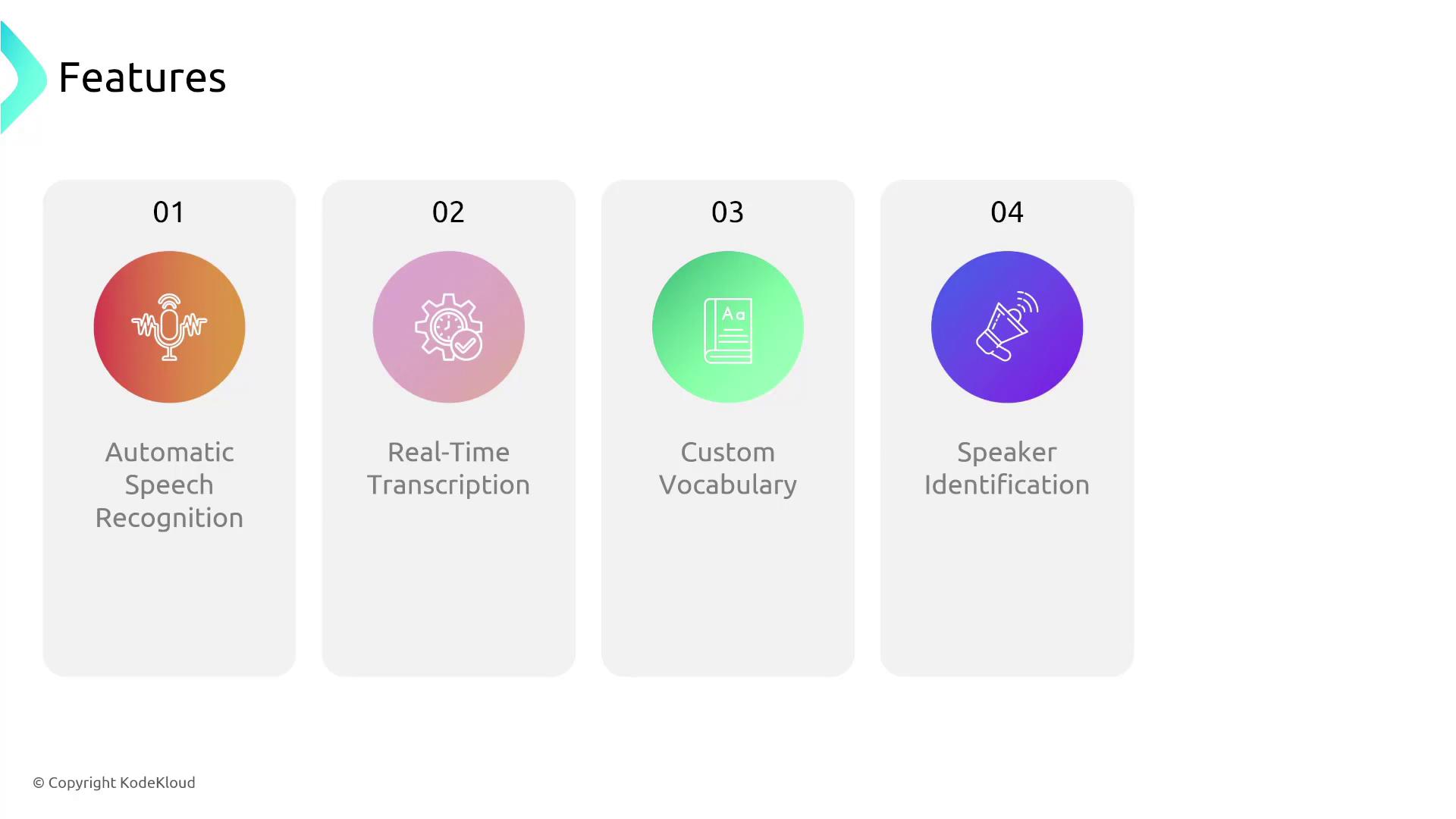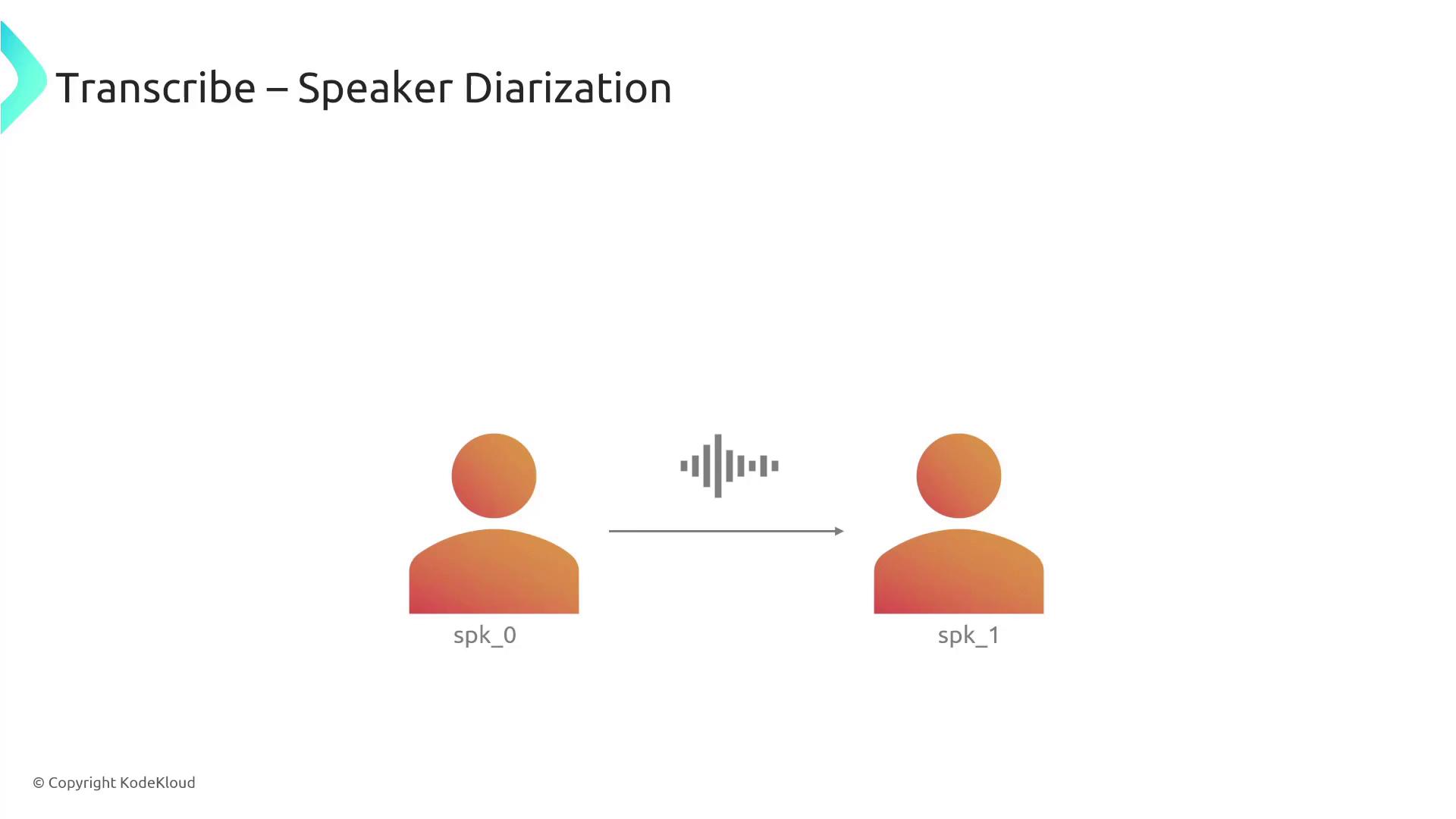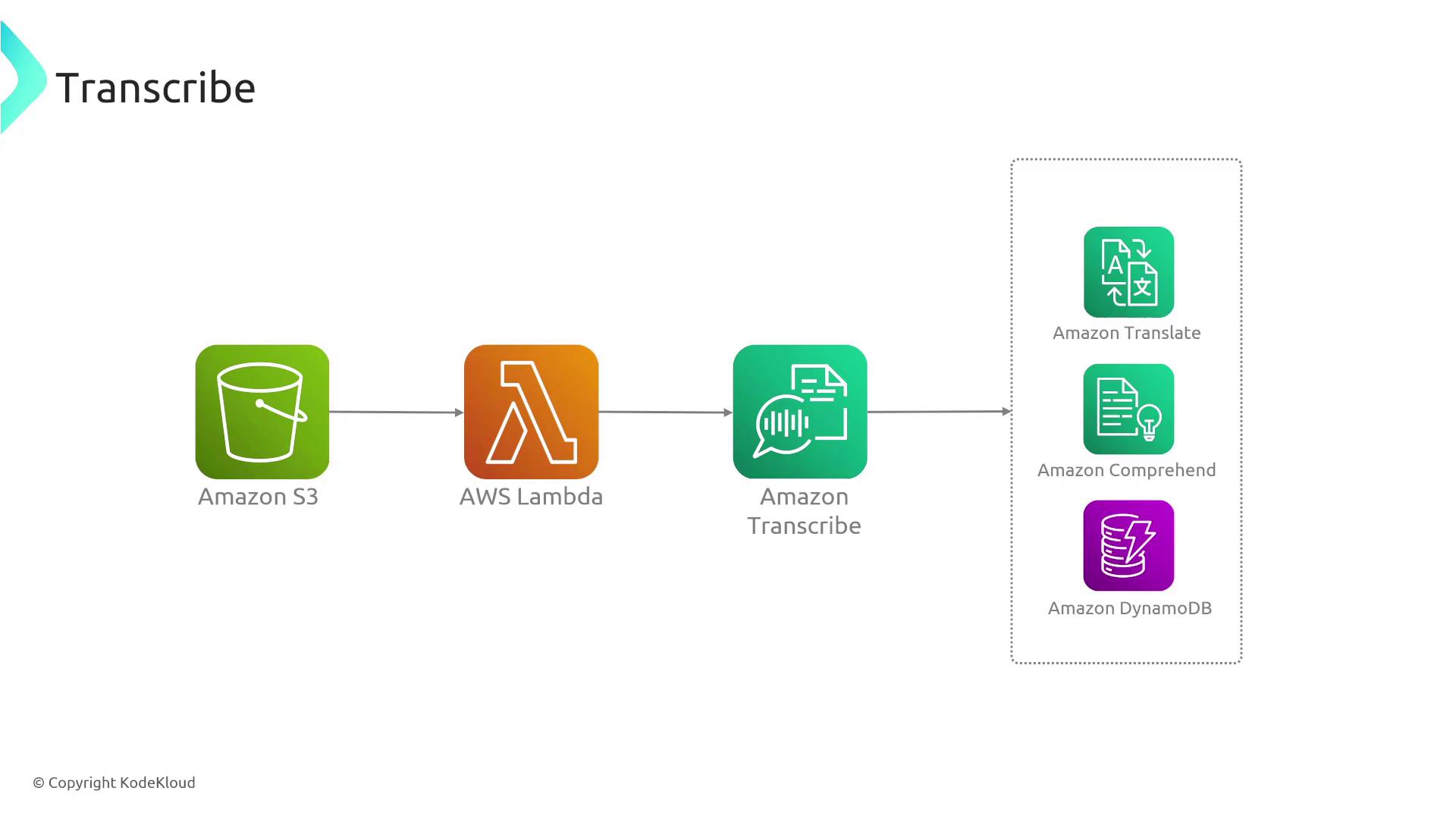AWS Solutions Architect Associate Certification
Services Data and ML
Transcribe
Welcome back, AWS Solutions Architects! In this lesson, we dive into Amazon Transcribe—a cutting-edge service that leverages advanced automatic speech recognition (ASR) to convert audio into text. As part of AWS's comprehensive suite of language services alongside Amazon Translate and Amazon Textract, Transcribe seamlessly integrates with other AWS offerings, making it ideal for processing customer calls, meetings, video subtitles, and much more.
Amazon Transcribe is designed to handle audio inputs from a variety of sources, such as meetings, presentations, and customer service calls. It automatically converts these recordings into text files, which are then stored directly in an Amazon S3 bucket. The output transcript is enriched with metadata, including speaker identification when applicable, providing enhanced value for interviews, live shows, and meetings with multiple participants.

Key Feature: Speaker Diarization
One of the standout features of Amazon Transcribe is speaker diarization. This capability distinguishes between different speakers in an audio clip by labeling each participant from "SPK0" to "SPK9." This clear designation is especially useful in multi-participant environments like conference calls and interviews.

How Speaker Diarization Works
Speaker diarization helps in accurately mapping conversations by identifying individual speakers, which makes it easier to analyze dialogue patterns and context in multi-speaker recordings.
Extending the Workflow with AWS Integration
After a transcription is completed and stored in Amazon S3, the transcription process can be further automated and enhanced using other AWS services. For example, an AWS Lambda function can be triggered to initiate additional processing tasks, such as:
- Forwarding the transcription results to Amazon Comprehend for sentiment analysis.
- Translating the text using Amazon Translate.
- Storing metadata and transcripts in Amazon DynamoDB for quick retrieval and further analysis.
Use Case: Transcribe Call Analytics
A compelling use case of Amazon Transcribe is in call analytics. By enabling Transcribe Call Analytics, businesses can extract actionable insights from customer interactions. This service allows organizations to identify key topics, follow-up actions, and areas for improvement in agent productivity and customer engagement, making it a game changer for call center operations.

Deployment Consideration
Ensure that your AWS Lambda functions and other integrated services are correctly configured to handle the data flow between Amazon S3 and Transcribe to avoid disruptions in the automated workflow.
Conclusion
Amazon Transcribe offers a robust, fully managed solution for audio-to-text conversion, enhanced by detailed analytics through its seamless AWS integrations. Whether you’re processing customer interactions, meetings, or media files, Transcribe provides a scalable solution that enhances the way you interact with and analyze audio content. Start exploring the power of speech recognition in your projects and unlock new insights from your audio data.
For additional information on related AWS services, check out:
- Amazon S3 Documentation
- AWS Lambda Documentation
- Amazon Comprehend Documentation
- Amazon Translate Documentation
- Amazon DynamoDB Documentation
Watch Video
Watch video content